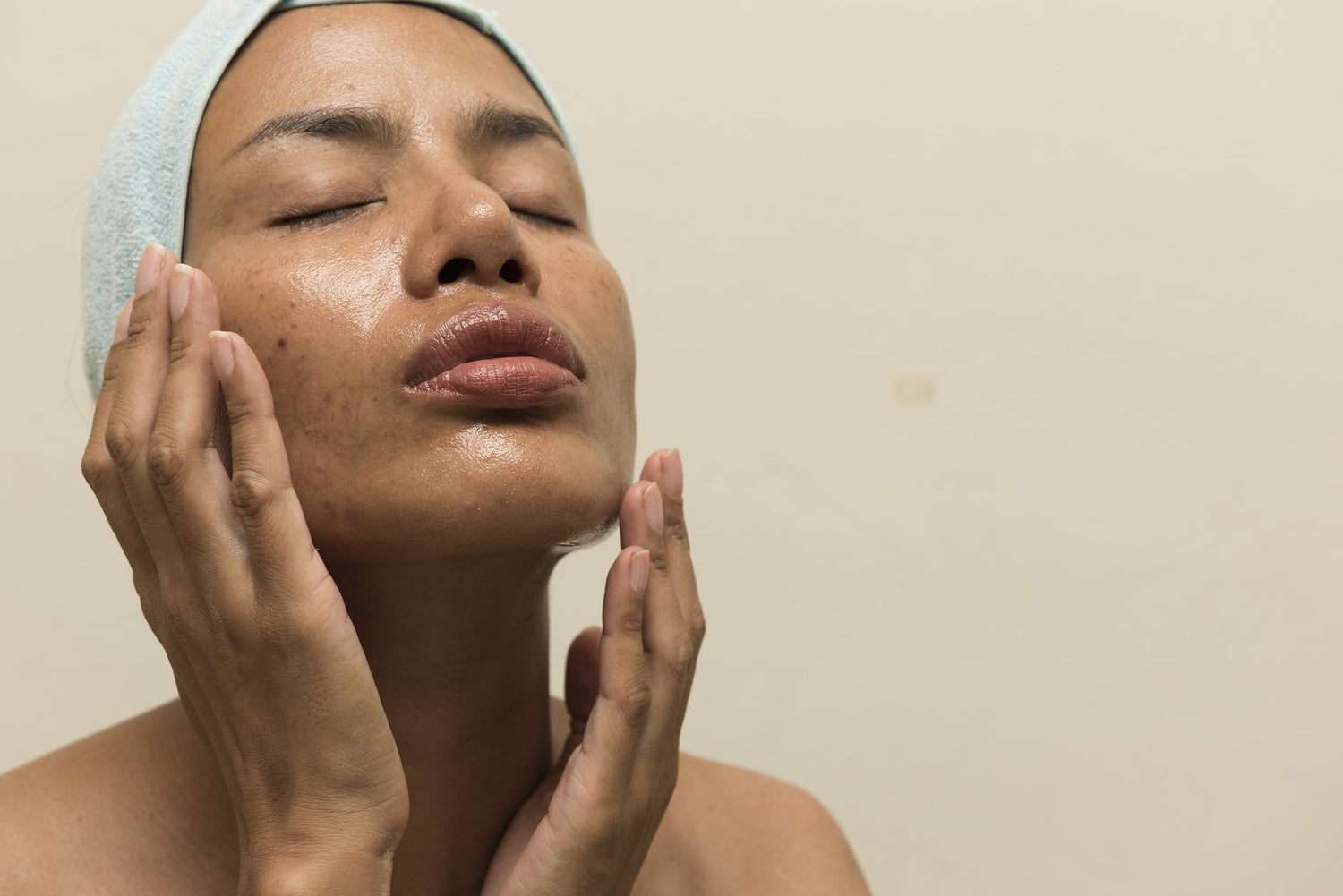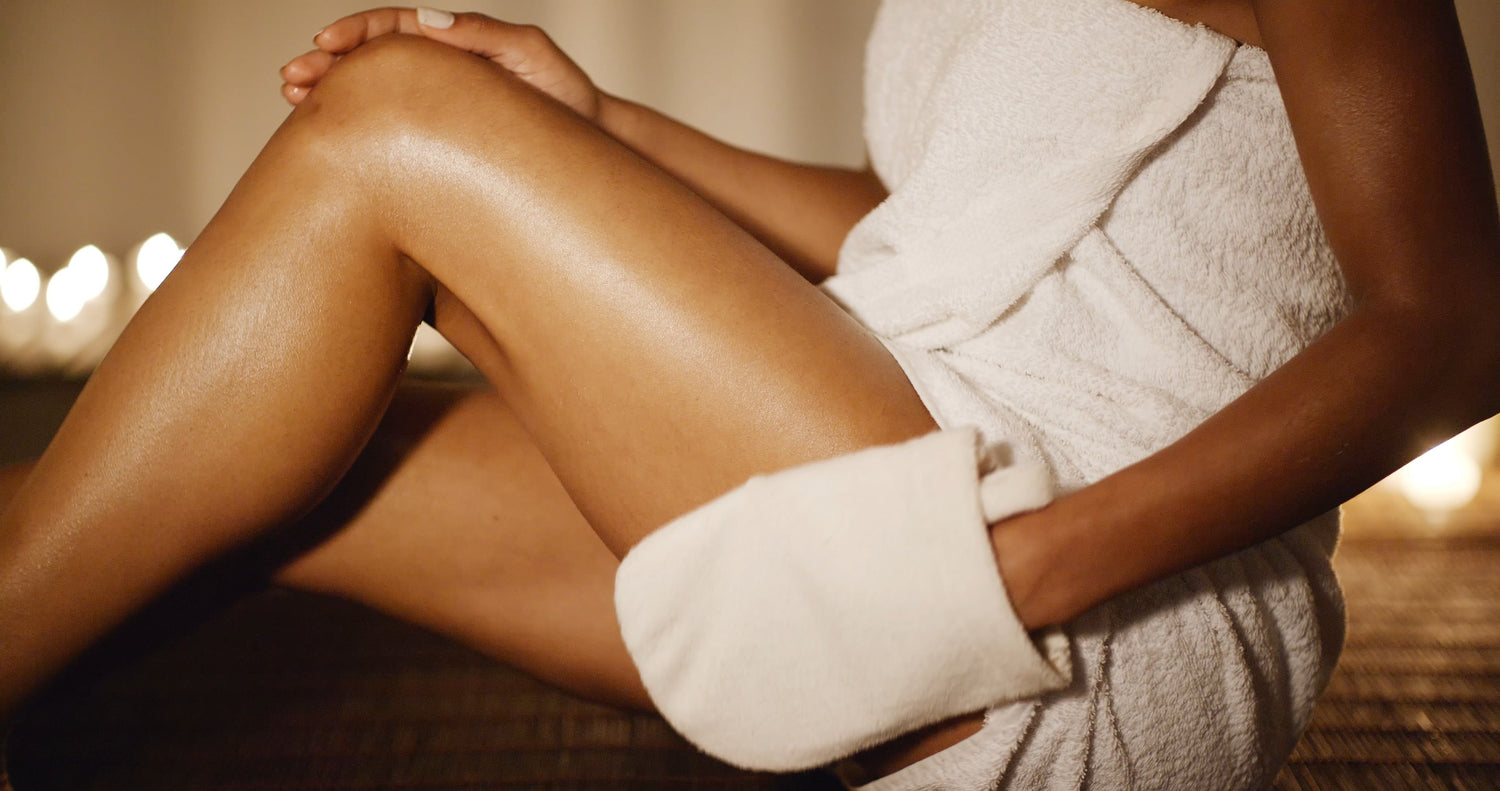When temperatures rise and layers come off, your skin enters a whole new season of challenges. From sweat-induced breakouts to fungal flare-ups, the warmer months can leave your skin feeling anything but radiant. While summer fun and outdoor activities are a highlight of the season, they can sometimes lead to unexpected skin problems. The good news? With a few preventative strategies—and the right products in your corner—you can enjoy healthy, glowing skin all summer long.
Let’s break down some of the most common summer skin problems and solutions so you can stay ahead of seasonal flare-ups.
1. Folliculitis (a.k.a. Infected Hair Follicles, Shaving Bumps or “Hot Tub Rash”)
What it is:
Folliculitis is inflammation of the hair follicles that can appear as small red bumps, pus-filled pimples, or itchy patches, especially in areas prone to sweat and friction (like thighs, bikini line, chest, and back). This condition occurs when hair follicles become infected, leading to red bumps and irritation.
Why it happens in summer:
Warm, moist environments—think sweaty workout clothes, damp swimsuits, or tight synthetic fabrics—create the perfect conditions for bacteria or yeast to irritate follicles. Contaminated hot tubs are also a common source of folliculitis during summer.
What you can do:
-
Change out of wet, tight or sweaty clothes promptly
-
Wear breathable cotton or sweat-wicking fabrics
-
Avoid shaving irritated areas and always use a clean razor
-
Gently cleanse the skin twice daily and after working out or excessive sweating
Lexli tip: Clarifying Cleanser uses a soothing base of pharmaceutical-grade aloe in conjunction with salicylic acid and other beneficial ingredients to clear pores and calm inflammation without stripping the skin.
2. Tinea Versicolor
What it is:
Tinea versicolor is a common summer skin condition (and harmless) caused by a fungus, showing up as discolored patches—lighter or darker than your skin—usually on the chest, shoulders, or back.
Why it happens in summer:
The yeast that causes this condition lives naturally on your skin, but heat, humidity, and sweat can trigger overgrowth. You can also pick it up by coming into contact with contaminated surfaces like shared pool chairs, gym equipment or damp towels.
What you can do:
-
Avoid heavy, oily lotions that trap heat and moisture
-
Wear sweat-wicking or loose cotton clothing
-
Change out of sweaty clothes right after working out or being in the sun
-
Cleanse skin immediately after contact with potentially contaminated surfaces
Lexli tip: Applying a dandruff shampoo to affected areas can be effective in treating tinea versicolor.
3. Body Acne (“Bacne”)
What it is:
Breakouts on the back, shoulders, or chest due to sweat, bacteria and clogged pores.
Why it happens in summer:
Sweat, friction, sunscreen buildup, and not showering quickly after exercise can all contribute to breakouts—especially in warmer months. When sweat mixes with oil and dirt on your skin, it can clog your pores and lead to acne breakouts.
What you can do:
-
Shower after sweating or outdoor activities
-
Exfoliate gently 1–2 times per week
-
Choose non-comedogenic skincare and sunscreens
-
Wear loose, breathable clothing that allows air circulation
-
Wash sweaty clothes promptly to reduce the risk of acne
Lexli tip: Clarifying Lotion is a lightweight lotion formulated with benzoyl peroxide and salicylic acid that works to clear skin congestion and improve texture. It can be applied to face and body.
4. Heat Rash (Miliaria)
What it is:
Heat rash, also known as prickly heat, occurs when sweat ducts become blocked, leading to small red bumps or blisters. This condition develops when sweat glands become blocked, trapping sweat under the skin. Blocked sweat glands can cause an itchy or prickly sensation. Heat rash typically goes away on its own when the skin cools down but can become infected.
Why it happens in summer:
It’s most common during hot, humid weather, especially in areas where clothing or skin folds trap heat—like the neck, under the breasts or waistband areas.
What you can do:
-
Stay in cool environments when temperatures soar
-
Keep skin dry and avoid tight clothes
-
Use lightweight, non-occlusive moisturizers and sunscreens
Lexli tip: Apply Simply Hydration, a lightweight moisturizer, to soothe and hydrate skin without clogging pores. This fast-absorbing, aloe-based moisturizer is ideal for hot weather.
5. Sunburn and UV Sensitivity
What it is:
Overexposure to UV rays causes red, painful skin that can later peel or develop hyperpigmentation. Some people also experience flare-ups of melasma or rosacea due to sun sensitivity. Direct sunlight on bare skin can even trigger allergic reactions in sensitive individuals.
Why it happens in summer:
Longer days, more time outdoors, and higher UV index levels all increase your risk—even on cloudy days. Additionally, certain medications can increase sun sensitivity and the risk of allergic skin reactions.
What you can do:
-
Wear a broad-spectrum SPF every day (and reapply!)
-
Choose wide-brimmed hats and UPF-rated clothing
-
Seek shade whenever possible while outdoors
-
Avoid peak sun hours (10 a.m. – 2 p.m.)
-
Be extra gentle with sun-exposed skin afterward
Lexli tip: After a day in the sun, calm your skin with Tone & Balance, which soothes, refreshes and hydrates skin while calming sunburn.
While summer is often associated with oily skin and sweat, dry skin can be just as much of a challenge, especially if you’re spending time in air conditioning or under the harsh summer sun.
To keep your skin hydrated and comfortable, start by choosing a gentle facial moisturizer appropriate for your skin type. Look for body washes labeled “moisturizing” or “hydrating” to support your skin’s natural barrier and don't forget the body lotion, which should be applied right after bathing or showering to lock in moisture. Swap out hot water for cool showers, which are gentler on your skin and help prevent further dryness.
Final Thoughts
Summer skin issues are common but often preventable with the right routine and a few simple tweaks to your skincare and wardrobe. Pay attention to how your skin reacts to heat, humidity and sweat, and adjust accordingly. And remember: if a rash or discoloration doesn’t improve or worsens over time, it’s best to check in with a dermatologist.





